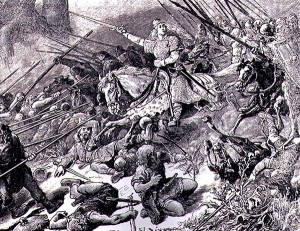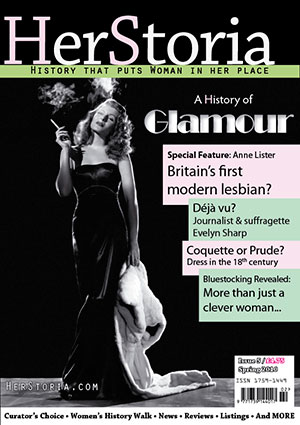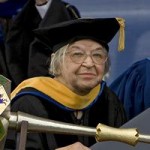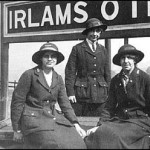Ethelflaed (Aethelflaed) d. 918
Table of Contents
Ethelflaed was the daughter and first-born child of Alfred the Great. She led her troops into battle against the Vikings and it was only with her active support that her younger brother Edward, King of Wessex between 899 and 925, was able to rule and implement peace policies which led to a united England.
Early life

Ethelflaed leading her warriors into battle. Illustration from Cassel’s Illustrated History of England.
Ethelflaed’s mother was Ealhswith, a woman with two noble houses in her bloodline; Ethelflaed’s sister, Ethelgiva, became the Abbess of Sharftsbury. When Ethelflaed’s father Alfred came to power, the country was still in the throes of on-going battles, dragging on in the aftermath of the Viking invasions in the early- eighth century. Although Alfred won some initial battles, within two years into his reign most of Mercia and Northumbria had reverted to Danelaw (rule by the Vikings). Alfred was forced to flee, retreating into the marshy wilderness of the Isle of Athelney (present day Somerset), where the legend of the burning of the cakes is said to have occurred.
It is unlikely that Ethelflaed shared the dangers of her father’s exile: the family would have been sent to a place of safety while Alfred made plans to regain power. However there would seem little doubt that she must have been aware, even as a young girl, of her father’s plight. The family’s fortunes were dramatically reversed when Alfred won a resounding victory over the Danes at Edington, Wiltshire, after which the enemy was driven back to their strongholds in East Anglia, Mercia and Northumbria. Alfred, now undisputed King of Wessex, went on to consolidate his victory and, by the end of his reign in 899, he handed over to his son Edward, a stable and well-governed kingdom.
Warrior and Ruler of the Mercians
At some point during the golden years of her father’s reign, Ethelflaed marrried Ethelred, Ealdorman of the Mercians, but was apparently widowed young. After her husband’s death, Ethelflaed ruled in her husband’s stead, becoming known as ‘The Lady of the Mercians’ – a soubriquet that put her on a par with the Saxon Ealdormen of the time and which reflects the respect in which she was held. When war broke out in 910, Edward immediately called on his powerful sister for help. ‘Edward was materially assisted in these struggles by his warlike sister Ethelflaed, widow of the Alderman [sic] of Mercia who, despite her sex, appears to have delighted in arms’, writes the anonymous author of nineteenth-century Cassell’s Illustrated History of England – one of the few historians to then credit Ethelflaed with the important role she played alongside her brother, and to accord her her deserved place in history:
Aided by her brother’s troops, she attacked the Welsh, who sided with the Danes, and obliged them to pay tribute to her. Nothing, indeed, is more remarkable in the history of this time than the ease and rapidity with which Edward and his sister re-conquered the Danelagh, as the district inhabited by the Danes was called. The reason of this prompt submission was that the two warriors, as we may fairly call them, were not content with merely winning battles, but took care to fortify and garrison the towns that fell into their hands.
Etheflaed, evidently, was much more than simply a powerful ally to her brother, offering ladylike support form the sidelines. She fought bloody battles at his side and in his name, in addition to which she was an able general and administrator. The author of Cassell’s History records:
At the time of her death in 918, the Lady of the Mercians had re-conquered the country as far north as York and was actually treating for the surrender of that city.
Edward went on to annexe all the Danelaw south of the Humber and was acknowledged as overlord by the Danish King of York, the King of the Scots, the King of the Strathclyde Britons, and many other warring chiefs.
Ethelflaed’s role in consolidating the Kingdom
Ethelflaed’s part in Edward’s victory should not be under estimated; on her death Edward took over the lands in Mercia—‘an important step in the consolidation of the kingdom’—and two important territories were brought under one rule. Edward died in 925 and the wars between Saxon and Dane continued unabated for some years. It was left to Edward’s son Athelstan (925-39) to finally consolidate the victories won by his father and remarkable aunt. Following a great victory at Brunanburgh in 837, his rule as overlord was acknowledged throughout the country.
Ethelflaed’s legacy is immeasurable but—like her warrior forbear Cartimandua, who eight centuries earlier had led her troops into battle, only to fade into obscurity—Ethelflaed, ‘of warlike fame, who delighted in arms’, is a largely forgotten name.
This is an edited version taken from the book Infamous Yorkshire Women (The History Press, 2009) by Issy Shannon![]() .
.










Leave a Reply